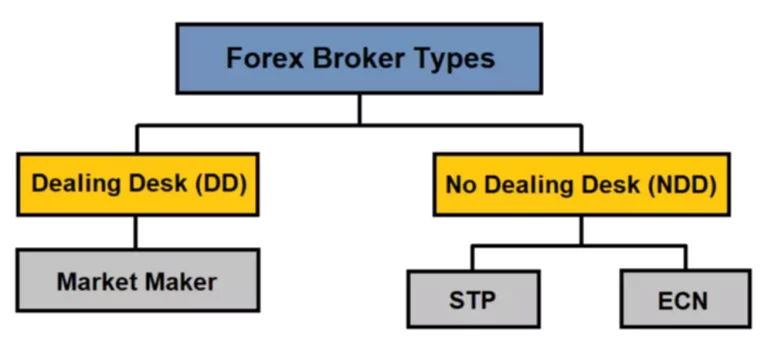Content
When covering investment and personal finance stories, we aim to inform our readers rather than recommend specific financial product or asset classes. Was the amount of cryptocurrency lost due to hacks and frauds online crypto wallet in April 2024. It foregoes screens and buttons, instead offering a credit-card sized device with embedded NFC capabilities. Another advantage of NGRAVE’s Zero wallet is its custom OS, which is built to overcome any vulnerabilities present in standard operating systems.

Challenges of using hardware wallets
The extra cost should be viewed as an investment to ensure your hard-earned cryptocurrency is Ethereum safe and sound. Cryptocurrency can be stored on the exchange they are bought on, like Coinbase. They can also be held in a digital wallet, like Atomic Wallet, which is a little more secure.

Should You Get Yourself a Hardware Wallet?
The device will verify and sign the transaction, generating a unique digital signature that can be used to confirm the transaction on the blockchain. To explain, this is incredibly important, as anyone with your private keys can access your crypto. Knowing that fact, bad actors will try to discover your private keys in order to steal your funds; either physically or via your internet connection. Then, once they get hold of them, they can control your whole crypto address and everything in it. Now that we understand the importance of keeping your private keys safe https://www.xcritical.com/ let us delve deeper into one of the most popular and trusted methods of storing private keys — hardware wallets.
How to Shop Online with Bitcoin? A Quick Guide 2025
- The NGRAVE ZERO one-upped Ledger and is the only hardware wallet in the world to achieve CLE 7 certification, while also holding the RoHS security certification that Trezor holds.
- Through encryption, hardware components, offline storage, and two-factor authentication (2FA), hardware wallets create an untouchable environment for storing and managing private keys.
- As a result, it’s imperative to generate brand-new private keys for each asset.
- The device will verify and sign the transaction, generating a unique digital signature that can be used to confirm the transaction on the blockchain.
- Trezor aims to support a broad range of cryptocurrencies from major blockchains.
- A hardware wallet is one of the safest and easiest ways to protect your cryptocurrency.
By using a hardware wallet, users can ensure that their private keys are never exposed to potentially compromised computers or mobile devices. The Ledger Nano S is a popular and reliable hardware wallet designed to securely store and manage multiple cryptocurrencies. It provides enhanced security by keeping your private keys offline, safeguarding them from online threats like hacking and phishing. The Nano S supports a wide range of cryptocurrencies, including Bitcoin and Ethereum, and allows users to confirm transactions via its built-in OLED display.
What Is a Hardware Wallet for Crypto?
When a user wants to make a crypto transaction, interact with a smart contract, DApp, or send crypto, they will need to verify the transaction on the hardware wallet, which “signs” the transaction. This verification layer means that unauthorized transactions cannot happen. The wallet’s job is to store your private key securely, ensuring only you can access your funds. Private keys are crucial to the security and ownership of your cryptocurrency, as they are the only way to prove that you are the rightful owner of your digital assets.
Most hardware wallets also have handy walk-through guides available on their websites. A common misconception is that funds are stored in a crypto wallet, which actually is not the case. One Bitcoin does not simply jump off the Bitcoin network and enter your wallet, like how we can pull cash from an ATM and put it in our physical wallet.
However, it’s important to note that most computer chips are not directly designed for storing private keys. This is exactly why Ledger devices use a custom operating system called BOLOS. Although hardware wallets are very secure, they are not suitable for everyone, especially not for inexperienced users. Typically, a hardware wallet is cumbersome and includes relatively complex operations and settings that are not beginner-friendly. A hardware wallet user has to back up their information regularly in case of loss, theft, or destruction. Our devices’ code is available for public audit, allowing users to understand exactly how their funds are stored.
Cryptocurrency is revolutionizing the way we think about money because it offers a decentralized, secure, and digital alternative to traditional finance. Hardware wallets that connect with other wallet interfaces, such as MetaMask, are beneficial if you use decentralised finance or NFT apps directly from the wallet. Government and institutional investors use cryptocurrency custody to protect digital tokens. Navigating Web3 securely means staying equipped with the right tools, as well as understanding the risks you face in this new environment. Ledger’s mission is to provide you with both, so that you can explore with confidence.
Most hardware wallets can support various cryptocurrencies, and they typically come with software that allows you to manage and monitor your holdings. Unlike with traditional investments, digital assets can’t be hidden under your mattress or in a safe deposit box. Instead, you must store them digitally, which leaves them vulnerable to cyber threats. Software wallets are popular for storing cryptocurrencies but are not the safest option. That’s where hardware wallets come in—a secure and reliable way to keep your digital assets safe. Because they’re offline, hardware wallets are considered one of the safest methods of safeguarding a user’s private keys.
For beginners, it’s a must-have tool for securely entering the crypto world. Most hardware wallets are small, portable devices that resemble USB drives, mini calculators, or even credit cards. Their design focuses on convenience and security, making it easy for users to interact with their crypto while keeping private keys offline. By storing your private keys offline, hardware wallets can provide peace of mind and protection against loss or theft. This is particularly important for long-term investors holding large amounts of cryptocurrency.
Trezor and Ledger have both improved their security to mitigate power glitching attacks, but it is still a good idea to keep your hardware wallet hidden so it doesn’t fall into the wrong hands. Every wallet comes with a recovery phrase, which will be shown to you when you first download or set up a new wallet. Hardware wallets will often come with paper on which to jot this phrase down. One of its key selling points is a large and intuitive 4-inch color touchscreen that makes the device similar to smartphones. It helps provide users with useful information and prevents mistakes and transaction errors.
Just as your house key opens the door to your house, your private keys open your address on the blockchain where your assets are stored. The interesting thing about hardware wallets is they are actually quite “dumb” in terms of simplicity. This focus on private key encryption is what makes hardware wallets a reliable choice for crypto enthusiasts and professionals alike. Only once verified with the hardware wallet will the transaction be broadcasted to the blockchain network. Most of these wallets are designed with features that make them impervious to hacking attacks even when connected to compromised devices, such as computers infected with malware. They come with physical buttons or interface features that must be manually used to confirm any action.
By generating and storing your private keys on a hardware device, you can be sure that your digital assets are safe and secure while you sleep at night. Hardware wallets, on the other hand, allow users to take the security of their private keys into their own hands with a physical piece of equipment. Hardware wallets generate and store private keys in a secure, offline environment. When a user initiates a transaction, the transaction details are sent to the hardware wallet.
The Ledger Nano S Plus takes my top pick for a low-priced wallet with fantastic asset support. Ledger also takes the edge over Trezor for DApp access but is not as beginner friendly as Trezor. ELLIPAL is also a fantastic wallet for anyone who wants to access DApps and DeFi with a hardware wallet.
The only way to create a backup of your paper wallet is to create a digital wallet. It targets users who value Binance integration, understand wireless security trade-offs, and seek a wallet backed by open-source principles. While surpassed in features by newer models, it remains a dependable option for users seeking a tried-and-true approach to securing their assets.

